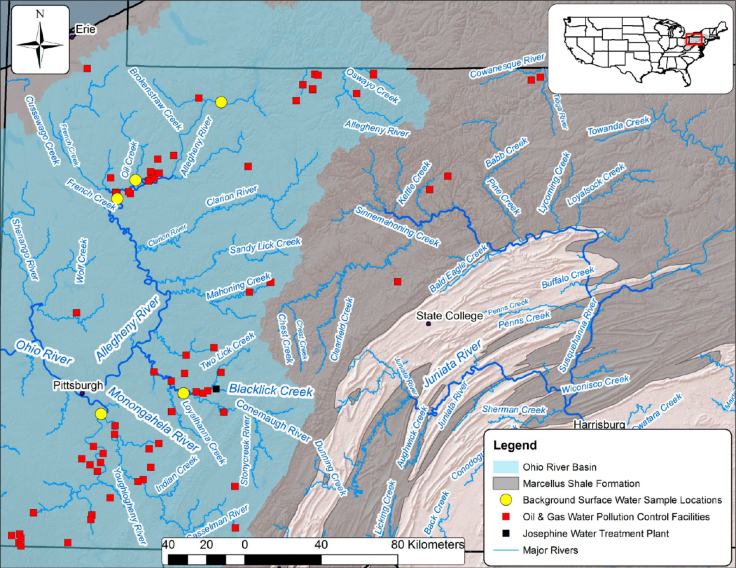Radiation Found In Fracking Wastewater In Pensylvannia's Marcellus Shale Region

Scientists studying the environmental effects of the controversial drilling technique known as fracking have found radioactive waste water from such an operation in a Pennsylvania's Marcellus Shale region.
The Marcellus Shale is one of the largest zones of its kind and stretches from Upstate New York to West Virginia. To extract the gas from the shale rock, millions of gallons of water and chemicals are used to fracture the formations deep beneath the surface. The drilling technique has been heavily criticized, and some environmentalists have long contended it poisons groundwater.
The two-year Duke University study collected water samples at Josephine Brine Treatment Facility, on Blacklick Creek in Indiana County, one of the 74 treatment facilities that treat fracking wastewater in the state.
Scientists found concentrations of the highly radioactive element radium as well as chloride and bromide, which were two to 10 times higher than normal.
“The treatment removes a substantial portion of the radioactivity, but it does not remove many of the other salts, including bromide," Avner Vengosh, professor of geochemistry and water quality at Duke University’s Nicholas School of the Environment, said. "When the high-bromide effluents are discharged to the stream, it increases the concentrations of bromide above the original background levels.” Avner added that bromide can increase the risk of highly toxic disinfection byproducts in drinking water.

Blacklick Creek is an arm of the Conemaugh River, which flows into the Allegheny River and provides water for several Pennsylvania cities, including Pittsburgh.
© Copyright IBTimes 2025. All rights reserved.






















